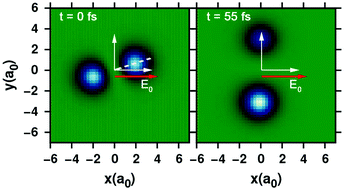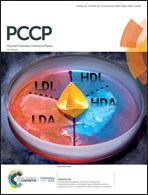Control defeasance by anti-alignment in the excited state†
Abstract
We predict anti-alignment dynamics in the excited state of H2+ or related homonuclear dimers in the presence of a strong field. This effect is a general indirect outcome of the strong transition dipole and large polarizabilities typically used to control or to induce alignment in the ground state. In the excited state, however, the polarizabilities have the opposite sign compared to those in the ground state, generating a torque that aligns the molecule perpendicular to the field, deeming any laser-control strategy impossible.



 Please wait while we load your content...
Please wait while we load your content...